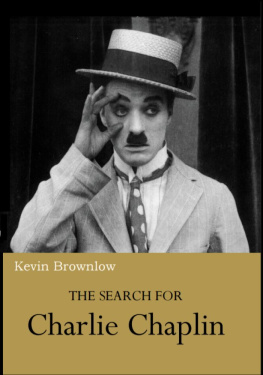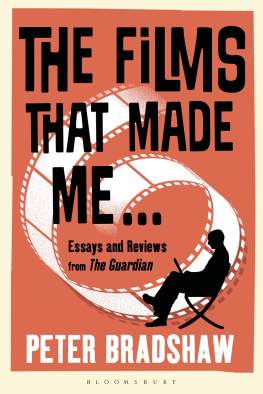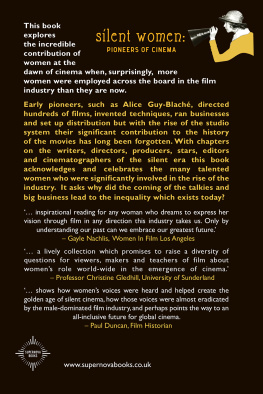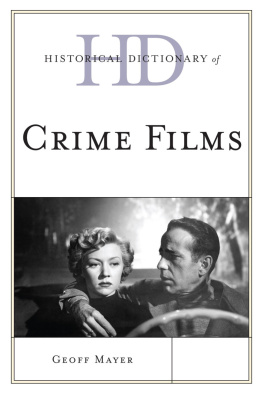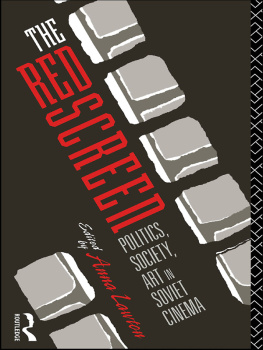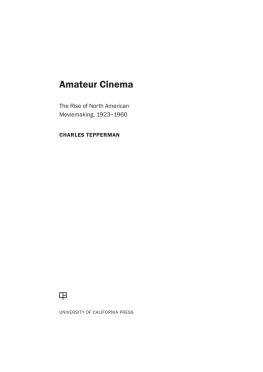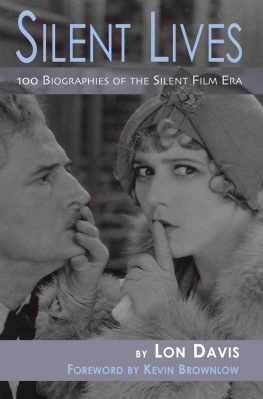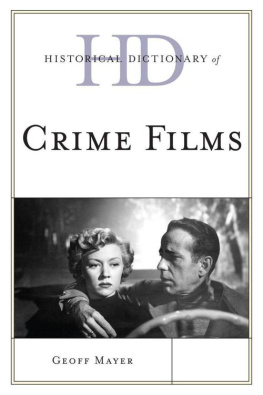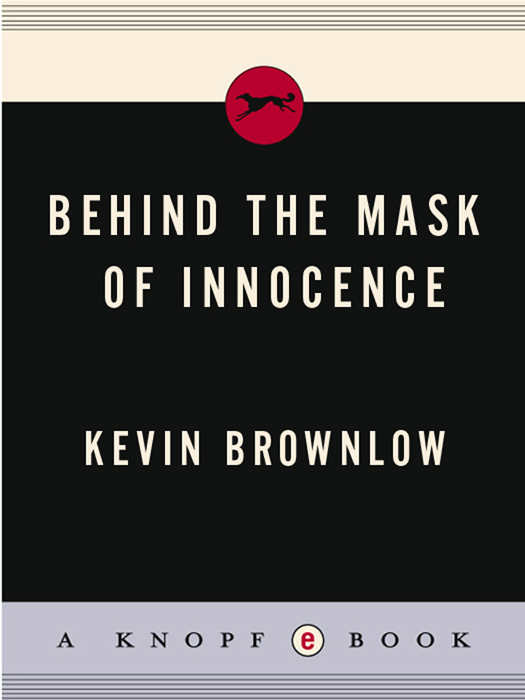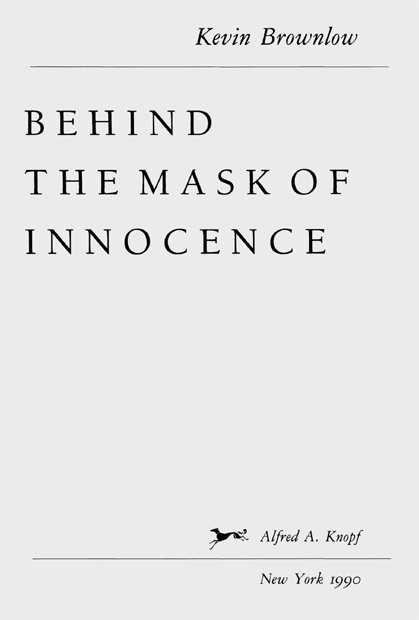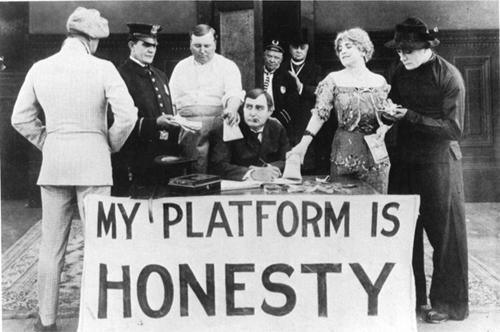ALSO BY KEVIN BROWNLOW
The Parades Gone By
How It Happened Here
The War, the West and the Wilderness
Hollywood: The Pioneers
Napoleon: Abel Gances Classic Film
THIS IS A BORZOI BOOK
published by alfred a. knopf, inc.
Copyright 1990 by Kevin Brownlow
All rights reserved under International and Pan-American Copyright Conventions. Published in the United States by Alfred A. Knopf, Inc., New York, and simultaneously in Canada by Random House of Canada Limited, Toronto. Distributed by Random House, Inc., New York.
Grateful acknowledgment is made to Variety for permission to reprint excerpts from reviews of The Bridge of Sighs (5/28/15), The Blacklist (2/18/16), Birth Control (4/13/17), Big Brother (12/27/23), and The Racket (7/11/28). Reprinted by permission of Variety Inc. Variety is a registered trademark of Variety, Inc. MGM stills Turner Entertainment Co.
Library of Congress Cataloging-in-Publication Data
Brownlow, Kevin.
Behind the mask of innocence : the social problem films of the
silent era / by Kevin Brownlow. 1st ed.
p. cm.
Includes bibliographical references.
eISBN: 978-0-307-82970-2
1. Silent filmsHistory and criticism. 2. Motion picturesUnited StatesHistory. 3. Social problems in motion pictures.
I. Title.
PN 1995.75. B 68 1990
791.430973 DC 20
89-71676
Endpapers: A New York motion picture theatre, 1913. (Kobal Collection)
Frontispiece: Ellis Island re-created in the studio for The Strong Man, directed by Frank Capra, 1926.
v3.1
F OR V IRGINIA AND J ULIA
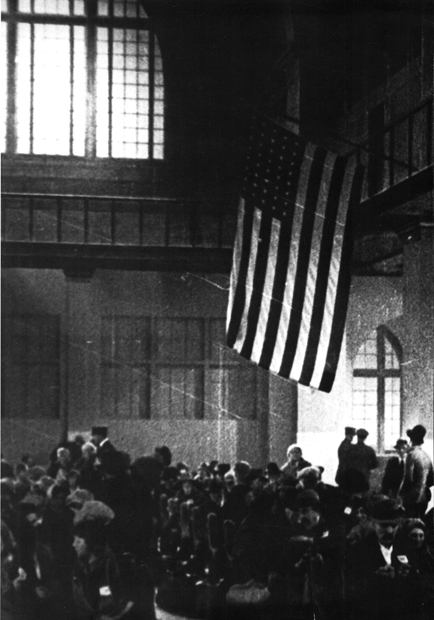
There is the same world for all of us, and good and evil, sin and innocence, go through it hand in hand. To shut ones eyes to half of life that one may live securely is as though one blinded oneself that one might walk with more safety in a land of pit and precipice.
O SCAR W ILDE
The motion picture industry is the greatest enemy of civilization, greater even than the liquor traffic. For a generation it has been the universal school of crime in all nations, creating the international illwill of foreign peoples against the United States and seriously interfering with our commerce abroad.
C ANON W. S HEAFE C HASE ,
rector of Christ Church, Brooklyn, New York, ca. 1926
Contents
Acknowledgments
Academy of Motion Picture Arts & Sciences
Lars Ahlander
Edward Allatt
Richard Ariano
Geoffrey Bell
Walter Bernstein
Bob Birchard
Lenny Borger
Q. David Bowers
Eileen Bowser
David Bradley
British Film Institute Information Department
British Library
Peter Cowie
David Crippen, Edison Institute, Ford Museum
Bob Cushman
Ray Daum
Gustav Deak
Samson De Brier
Angela Doyle
William Drew
Herv Dumont
Harold Dunham
Edison National Historic Site
Bernard Eisenschitz
William Ellington
William K. Everson
Leatrice Gilbert Fountain
George Geltzer
Bob Geoghegan
David Gill
Bob Gitt
Peter and Anne Gower
Kevin Green
Dr. Fritz Gttinger
Michael Henshaw
Steven Higgins
Derek Hill
Historical Health Film Collection, University of Michigan
Frank Holland
Jim Hoberman
J. B. Kaufman
David Kenten
Paul Killiam
Linda Kowall
Annette Kuhn
Jay Leyda
Lilly Library, University of Indiana
Lars Lindstrom
Jack Lodge
Bruce Long
Gloria Loomis
Patrick Loughney
Arthur Lubin
Sue McConachy
Gerald McKee
Richard Maltby
Anna-Maija Marttinen
William T. Murphy
Charles Musser
Herbert Nusbaum
Steve Oney
James Patterson
James Pepper
Martin Pernick
David Platt
George Pratt
Susan Ralston
Adam Reilly
Ira Resnick
David Robinson
Steven Ross
John Rylands Library, Manchester University
Mr. and Mrs. Donald Salinger
Markku Salmi
David Samuelson
Edith Schwartz
Daniel Selznick
David Shepard
Martin Short
Charles Silver
Joel Silver
Scott Simon
Jeff Smith
Martin Sopocy
Paul Spehr
Patrick Stanbury
Laura Starrett
Thames Television
Lawrence Copley Thaw, Jr.
David Thaxton
Frank Thompson
Yuri Tsivian
Charles Turner
George Turner
United States Library, University of London
Mia Vander Els Alexander Walker
Marc Wanamaker
Charles Wenden
Wichita State University, Special Collections Department
William Wilson
Michael Yocum
Kyril Zinovieff
Albin Zwiazek
and special gratitude to Gloria Loomis, who rescued the manuscript from a snowdrift of rejection slips, and to Susan Ralston, for her epic job of editing.
K. B.
Introduction
The silent era is celebrated for its innocence. The charming picture it presents of America in the early years of the century has led people to assume that life was quieter then, gentler and more civilized. But the silent era recorded another America. It revealed the corruption of city politics, the scandal of white slave rackets, the exploitation of immigrants. Gangsters, procurers, and loan sharks flashed across the same screen as Mary Pickford, but their images have mostly been destroyed, leaving us with an unbalanced portrait of an era.
This book is an attempt to set the record straight. I believe that one day, those films which give us an accurate impression of how people lived will be regarded as precious as the most imaginative flights of fiction.
Our view of the silent era is conditioned by the minuscule number of films in circulationfilms which have selected themselves by virtue of their availability. This book will show the astonishing range of subjects dealt with in that period. While few of these films made history, all of themif only for a few momentsrecorded it.
Lois Weber exposes corruption in American politics with The Hypocrites, 1915. The grafting politician is paid off by the gangster, the cop, the saloonkeeper, the madam, and the drug dealer. (The madam is Jane Darwell, of Grapes of Wrath fame.) (National Film Archive)
The early films were made to a pattern which had proved its commercial value on the popular stage. Give the audience someone to identify with, bring in heart interest, a pretty girl or an appealing child, and wind up with a happy ending. Into this you can mix whatever theme you want. Banal it may sound, but some remarkable films were made with this formula.
Some smothered their subject matter with glutinous sentimentality. They were old-fashioned in the worst sense. A critic of 1913 described them as exhibiting a feeble-minded subservience for what may have served some past generation but which has no bearing on this one. Other films adopted plain stories and a straightforward approach, which became the trademark for American films. Their very directness appealed to audiences, but often disturbed those in authority. Strong themes unimpaired by symbolism or sentimentality brought down upon the industry the wrath of clergy, reformers, and politicians alike.


